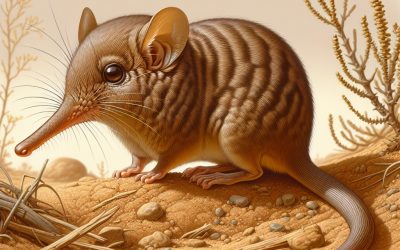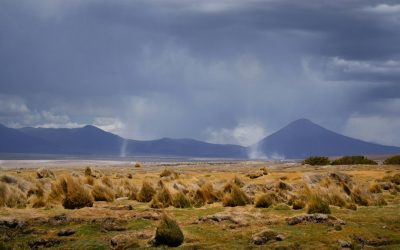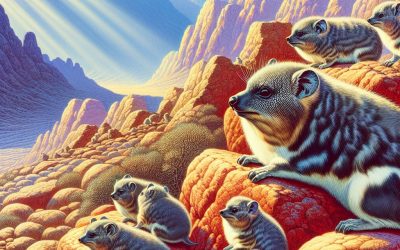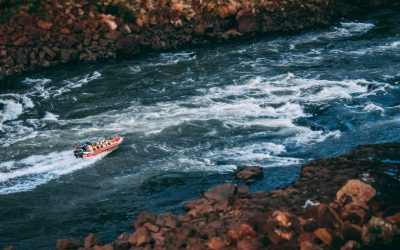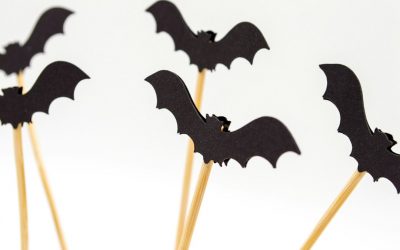Biology (from the Latin ‘bios’ meaning life and ‘logia’ meaning study of) is the study of all organisms and all aspects of their life-cycles.
Biology
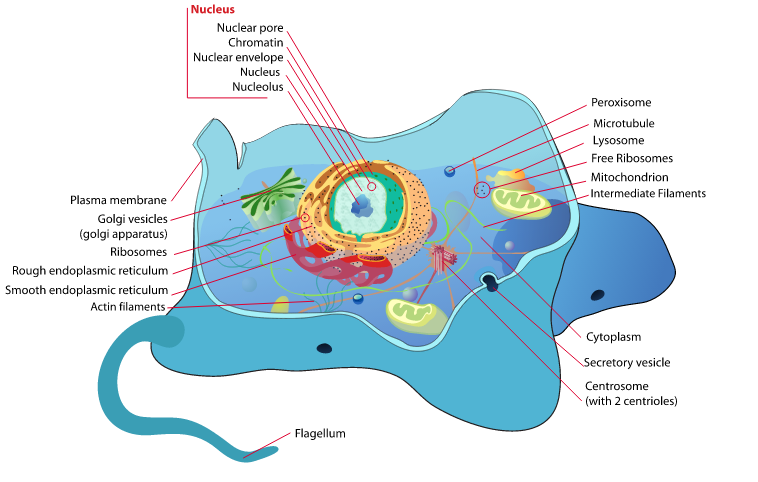
Biology (from the Latin ‘bios’ meaning life and ‘logia’ meaning study of) is the study of all organisms and all aspects of their life-cycles. The subject of Biology, as we know it today, was born in the nineteenth century along with physics, chemistry and the scientific method. Before then ‘Natural Philosophy’ which was the study of nature and the physical universe, included biology, chemistry and physics.
Natural Philosophy The study of our natural world is known to date back to the time of Mesopotamia around 3,100 BC but as this was the beginning of written historic record the study probably existed long before this time. Modern Biology The first great development of modern biology came from Charles Darwin, who is often referred to as the father of modern biology. Although known for his work ‘On the Origin of Species’ (published in 1859), Darwin produced nineteen additional publications, wrote hundreds of scientific papers and fourteen thousand letters, all of which laid the foundations for Biology as a subject we recognise today. Although he did not invent the theory of evolution, he certainly made the idea more accessible to the world. His theory was evolution by natural selection; where by an organism with a mutation may be better adapted to certain environmental changes and therefore improve their chance of survival. This means the organism with the useful mutation is more likely to survive, reproduce and hopefully pass on the useful mutation. Overtime species are able to adapt to the world around them and this process gave the Galapagos Islands (and the world) the rich diversity of its inhabitants. Deoxyribonucleic acid or DNA was first discovered in 1869 but its role was not known at the time. It was in 1943 that it was discovered that it is DNA that is responsible for programming the genetic makeup of organisms and passing on the mutations Darwin had discovered. This new understanding of how amino acids are programmed on a cellular level to make up various parts of the organism was a huge leap forward but new profound discoveries are being made everyday in the field of biology.
Notoryctemorphia: The Fascinating World of Marsupial Moles in Australia
Notoryctemorphia is an order of marsupial moles that is unique to Australia. These small, burrowing mammals are known for their cylindrical body shape, lack of external ears and eyes, and specialized digging claws. They are classified as an order within the marsupial infraclass, which also includes kangaroos, koalas, and wombats. Studying marsupial moles is important for understanding the diversity of Australian fauna. Australia is home to a wide range of unique and endemic species, and marsupial moles are no exception. By studying these fascinating creatures, scientists can gain insights into the evolutionary history and adaptations of Australian mammals. Summary Notoryctemorphia is a unique order of marsupial moles found only in Australia. Marsupial moles have physical adaptations such as a streamlined body and shovel-like forelimbs for life underground. Marsupial moles are found in arid and semi-arid regions of Australia and are threatened by habitat loss and fragmentation. Marsupial moles feed on insects and have a unique reproductive system where females have only two teats. The evolutionary history of marsupial moles in Australia dates back to the Miocene epoch and they are considered a living fossil. The Physical Characteristics of Marsupial Moles: Adaptations for Life Underground Marsupial moles have several unique physical features that allow them to thrive in their underground habitat. Their cylindrical body shape is ideal for moving through the soil, as it reduces resistance and allows them to navigate narrow tunnels. They lack external ears and eyes, as these features are unnecessary in their dark underground environment. One of the most striking adaptations of marsupial moles is their specialized digging claws. These claws are long and curved, allowing...
Discovering the Fascinating World of Microbiotheria: The Enigmatic Monito Del Monte
The Monito Del Monte, also known as the “little monkey of the mountain,” is a small marsupial that is native to the temperate rainforests of South America. It is the only surviving member of the order Microbiotheria, making it a truly unique and mysterious animal. The Monito Del Monte has captured the attention of scientists and researchers due to its distinct characteristics and evolutionary history. Studying the Monito Del Monte is important for several reasons. Firstly, it provides valuable insights into the evolution and adaptation of marsupials. As one of the most primitive marsupials, the Monito Del Monte can help scientists understand how these animals have evolved over millions of years. Additionally, studying this species can shed light on the ecological role it plays in its habitat and its interactions with other species. Summary The Monito Del Monte is a unique and mysterious animal. Microbiotheria is the taxonomic group to which the Monito Del Monte belongs. The Monito Del Monte’s natural habitat is in the temperate rainforests of South America. The Monito Del Monte has physical characteristics that allow it to adapt to its surroundings. The Monito Del Monte’s diet and digestive system have been studied to understand its feeding habits. The Taxonomy and Evolution of Microbiotheria: Understanding the Monito Del Monte’s Place in the Animal Kingdom Microbiotheria is an order of marsupials that includes only one living species, the Monito Del Monte. This order is believed to have diverged from other marsupials around 65 million years ago, making it one of the oldest lineages of marsupials. The Monito Del Monte shares some similarities with other marsupials, such as...
The Wonders of Monotremata: Exploring the Fascinating World of Platypus and Echidnas
Monotremata, also known as monotremes, is a unique order of mammals that includes the platypus and echidnas. They are characterized by their egg-laying reproduction, which sets them apart from other mammals. Monotremes are considered to be one of the most primitive groups of mammals, with their lineage dating back over 200 million years. One of the defining characteristics of monotremes is their ability to lay eggs. This is a trait that is typically associated with reptiles and birds, making monotremes a fascinating evolutionary anomaly. The eggs of monotremes have a leathery shell and are incubated outside the mother’s body. Monotremes also possess a number of other unique characteristics. For example, they have a cloaca, which is a single opening for excretion and reproduction. They also lack nipples and instead secrete milk through specialized mammary glands that are located on their abdomen. Monotremes are found in Australia and New Guinea, with the majority of species being endemic to Australia. They inhabit a range of habitats, from rainforests to deserts, and can be found in both terrestrial and aquatic environments. The diversity of monotremes is relatively low, with only five extant species known to science. Summary Monotremata is a unique order of mammals that lay eggs instead of giving birth to live young. The platypus is a marvel of evolution with a unique anatomy that includes a duck-like bill and webbed feet. Echidnas, also known as spiny anteaters, are another type of monotreme found in Australia. Monotremes have a unique reproductive system where females lay eggs and then nurse their young with milk. Platypus and echidnas have unique hunting and feeding...
Exploring the Fascinating World of Macroscelidea: Meet the Adorable Elephant Shrews!
Elephant shrews, also known as sengis, are small mammals that belong to the order Macroscelidea. Despite their name, they are not shrews and are not closely related to elephants. Elephant shrews are found in Africa and are known for their unique characteristics and behaviours. They have a long nose, slender body, and long hind legs, which allow them to move quickly and efficiently through their habitats. Elephant shrews are small in size, typically measuring between 10 to 30 centimeters in length, excluding their tails. They have a slender body with short fur that can range in color from brown to gray. One of the most distinctive features of elephant shrews is their long nose, which is flexible and can be moved in different directions. This long nose helps them in foraging for food and detecting predators. Summary Elephant shrews are small, insect-eating mammals found in Africa. They have a distinctive long, flexible nose that they use to search for food. Elephant shrews live in a variety of habitats, from forests to deserts. Their diet consists mainly of insects, but they also eat fruits and seeds. Elephant shrews are solitary animals that communicate with each other through scent marking and vocalizations. The Physical Characteristics of Elephant Shrews: From Nose to Tail. Elephant shrews have a unique physical appearance that sets them apart from other small mammals. As mentioned earlier, their long nose is one of their most prominent features. This nose is not only used for foraging but also for communication and navigation. Elephant shrews have a keen sense of smell, which helps them locate food and detect potential...
Lagomorha: The Fascinating World of British Rabbits, Hares, and Pikas
Lagomorpha is an order of mammals that includes rabbits, hares, and pikas. These small to medium-sized herbivores are found all over the world, including in the United Kingdom. In Britain, lagomorphs play an important role in the ecosystem and have cultural significance as well. Studying these animals is crucial for understanding their behavior, ecology, and conservation needs. British lagomorphs are diverse and include several species of rabbits, hares, and pikas. The most common species in the UK is the European rabbit (Oryctolagus cuniculus), which is found in various habitats across the country. Other species include the mountain hare (Lepus timidus), brown hare (Lepus europaeus), and the pika (Ochotona pusilla). Each species has its own unique characteristics and adaptations that allow them to thrive in their respective habitats. Studying lagomorphs is important for several reasons. Firstly, they are an integral part of the ecosystem and play a crucial role in maintaining biodiversity. Lagomorphs are herbivores and their feeding habits can shape vegetation communities, which in turn affects other species that rely on those plants. Additionally, lagomorphs are prey for many predators, so understanding their behavior and population dynamics is essential for managing predator-prey relationships. Finally, lagomorphs have cultural significance and are often associated with folklore and traditions in many societies. Summary Lagomorpha is the order of British rabbits, hares, and pikas. British lagomorphs include 13 species of rabbits, hares, and pikas. Lagomorphs have a short life cycle, with rapid growth and reproduction. British lagomorphs can be found in a variety of habitats, from grasslands to mountains. Lagomorphs are herbivores and play an important role in the ecosystem as prey and...
The Secret Insectivores: Discovering the Fascinating World of British Shrews, Moles, and Hedgehogs
Insectivores are a group of small mammals that play a vital role in ecosystems by controlling insect populations and contributing to soil health. In Britain, there are three main types of insectivores: shrews, moles, and hedgehogs. Despite their importance, these creatures often go unnoticed and are shrouded in mystery. In this article, we will delve into the secret lives of British insectivores, exploring their behavior, habitat, and unique characteristics. Summary British insectivores, such as shrews, moles, and hedgehogs, play a crucial role in maintaining ecosystems. These animals have unique physical characteristics that allow them to thrive in their environments. Shrews are elusive creatures that live secretive lives, often hiding in underground tunnels. Moles are expert diggers that create intricate tunnel systems underground. Hedgehogs have surprising habits, such as self-anointing with saliva and hibernating during the winter months. The Role of Shrews, Moles, and Hedgehogs in Ecosystems Each type of British insectivore has its own unique contribution to the ecosystem. Shrews, for example, are voracious predators that feed on a variety of insects, worms, and small vertebrates. They play a crucial role in controlling insect populations and maintaining the balance of their habitats. Shrews also contribute to soil health by aerating the soil as they burrow and search for food. Moles, on the other hand, are expert tunnelers that spend most of their lives underground. They feed primarily on earthworms and other soil-dwelling invertebrates. By consuming large quantities of these creatures, moles help to regulate their populations and improve soil structure. Their tunneling activities also aerate the soil and promote nutrient cycling. Hedgehogs are perhaps the most well-known of the...
The Fascinating World of Hyracoidea: Exploring the Quirky Habits and Traits of Hyraxes
Hyracoidea and Hyraxes: The Small Mammals with Giant Connections Hyraxes might look like oversized guinea pigs or odd rabbits, but these unassuming creatures belong to the remarkable order Hyracoidea. Although they are small and often overlooked, hyraxes are closely related to elephants and manatees, not rodents. This surprising fact, along with their fascinating evolutionary history and unique adaptations, makes hyraxes an extraordinary topic of study in mammalian biology. This article delves deep into the world of Hyracoidea, revealing the natural history, behavior, species diversity, and ecological role of these herbivorous mammals. If you’re curious about odd relatives in the animal kingdom, this is an article worth reading. 🗂️ Article Outline: Exploring Hyraxes and Hyracoidea 1. What Are Hyraxes and What Is the Order Hyracoidea? 2. Why Are Hyraxes Closely Related to Elephants and Manatees? 3. Where Do Hyraxes Live? Habitat and Distribution 4. What Species of Hyraxes Are There? 5. What Are the Differences Between Rock and Tree Hyraxes? 6. How Do Hyraxes Behave in the Wild? 7. What Are Hyraxes’ Physical and Anatomical Adaptations? 8. How Do Hyraxes Reproduce and Develop? 9. What Role Do Hyraxes Play in Their Ecosystems? 10. Why Do Hyraxes Matter in Evolutionary Studies? 1. What Are Hyraxes and What Is the Order Hyracoidea? Hyraxes are small, well-furred, herbivorous mammals that belong to the order Hyracoidea. Despite their resemblance to rodents or rabbits, they share a closer ancestry with elephants. The order Hyracoidea includes just one living family, Procaviidae, and today, there are recognized 11 species of hyraxes. These animals range between 30 and 70 cm in length and typically weigh between 2...
The Fascinating World of Diprotodontia: Exploring the Unique Traits of Wombats, Kangaroos, Wallabies, and Koalas
Diprotodontia is an order of marsupials that includes some of Australia’s most iconic and unique animals. Marsupials are a distinct group of mammals that give birth to relatively undeveloped young, which then continue to develop and nurse in a pouch. This is in contrast to placental mammals, which give birth to fully developed young. Marsupials have evolved in isolation in Australia for millions of years, resulting in a diverse range of species with unique adaptations. They play a crucial role in Australia’s ecosystem, as they fill ecological niches that are occupied by placental mammals in other parts of the world. For example, kangaroos and wallabies are herbivores that graze on grasses and shrubs, similar to deer or antelope in other parts of the world. Summary Diprotodontia are marsupials with unique traits, including a specialized dental structure and a pouch for carrying their young. Wombats are expert burrowers, with strong legs and sharp claws that allow them to dig complex underground tunnels. Kangaroos are iconic symbols of the Australian outback, with powerful hind legs that enable them to hop at high speeds and cover long distances. Wallabies are agile jumpers that inhabit forest floors, with long tails that help them balance and maneuver through dense vegetation. Koalas are cute tree-dwellers that feed exclusively on eucalyptus leaves, with a specialized digestive system that allows them to break down the toxic compounds in their diet. Wombats: The Burrowing Experts of the Australian Bush Wombats are one of the most distinctive and fascinating members of the Diprotodontia order. They are medium-sized marsupials that are well adapted for life underground. Wombats have a stocky...
Fascinating Fauna: The Wondrous World of British Dermoptera and Didelphimorphia
Dermoptera and Didelphimorphia are two unique and interesting groups of animals found in the United Kingdom. Dermoptera, commonly known as colugos or flying lemurs, are arboreal mammals that are native to Southeast Asia. Despite their name, colugos are not actually lemurs and they do not fly. Instead, they have a unique adaptation that allows them to glide through the air. Didelphimorphia, on the other hand, refers to the order of marsupials that includes opossums. While opossums are not native to the UK, there is one species, the Virginia opossum, that has been introduced to the country. These animals are unique and interesting for a variety of reasons. Firstly, their physical characteristics and adaptations set them apart from other animals in the UK. Colugos have a large patagium, or membrane, that stretches between their limbs and tail, allowing them to glide through the air. This adaptation is highly specialized and allows them to travel long distances between trees. Opossums, on the other hand, have a pouch in which they carry and nurse their young. This marsupial characteristic is not seen in any other mammals found in the UK. Summary British Dermoptera and Didelphimorphia are two unique orders of mammals found in the UK. Dermoptera, also known as colugos, have a unique gliding ability thanks to their skin flaps. Didelphimorphia, or opossums, are the only marsupials found in the UK. Both orders have a long evolutionary history, with Dermoptera dating back to the Eocene epoch. These animals play important roles in the ecosystem, with Dermoptera helping to disperse seeds and Didelphimorphia controlling insect populations. The Unique Characteristics of Dermoptera and Didelphimorphia...
Discovering the Fascinating World of Dasyuromorphia: Meet the Quolls, Dunnarts, Numbats and Tasmanian Devils
Dasyuromorphia is an order of carnivorous marsupials native to Australia. These unique creatures are known for their sharp teeth, powerful jaws, and predatory nature. They are a diverse group, with several different species belonging to this order. Dasyuromorphia includes animals such as quolls, dunnarts, numbats, and Tasmanian devils. Summary Dasyuromorphia are carnivorous marsupials found in Australia with a diverse range of species. Quolls are cute but deadly predators that inhabit the bush and are known for their unique spotted fur. Dunnarts are tiny insectivores with a big appetite, consuming up to their own body weight in insects each night. Numbats are endearing termite eaters found in Western Australia and are one of the few diurnal marsupials. Tasmanian Devils are fierce fighters with a unique personality and are known for their loud screeching calls. Meet the Quolls: The Cute but Deadly Predators of the Bush Quolls are small to medium-sized marsupials that belong to the Dasyuromorphia order. They are known for their distinctive spotted fur and long tails. Quolls are skilled hunters and have a varied diet that includes insects, small mammals, birds, reptiles, and even fruits. They are nocturnal creatures and spend their days resting in dens or hollow logs. One interesting fact about quolls is that they have a unique way of hunting. They use their strong jaws and sharp teeth to deliver a fatal bite to their prey’s neck or head. This method ensures a quick and efficient kill. Quolls are also known for their ability to climb trees, which allows them to hunt for prey in both the ground and canopy levels of their habitat. Dunnarts:...
The Fascinating World of Chiroptera: Delving into the Lives of British Bats
British bats are a diverse and fascinating group of mammals that play an important role in the ecosystem. There are 18 species of bats that can be found in the United Kingdom, making it one of the most bat-rich countries in Europe. These nocturnal creatures are known for their ability to navigate and hunt using echolocation, a process in which they emit high-pitched sounds and listen for the echoes that bounce back from objects in their environment. Studying and understanding bats is crucial for several reasons. Firstly, bats are indicators of a healthy environment. Their presence or absence can provide valuable information about the state of ecosystems and the impact of human activities on biodiversity. Secondly, bats are important pollinators and seed dispersers, contributing to the reproduction and survival of many plant species. Lastly, bats play a vital role in pest control by consuming large quantities of insects, including agricultural pests. Summary British bats are a diverse and fascinating group of mammals that play an important role in the ecosystem. The life cycle of British bats involves birth, growth, and maturity, with some species living up to 30 years. There are many species of British bats, each with unique physical characteristics and behaviours. Bats are important for pollination, pest control, and maintaining a healthy ecosystem. Threats to British bats include habitat loss, climate change, and human interference, but conservation efforts are underway to protect them. The Life Cycle of British Bats: From Birth to Maturity and Beyond Reproduction and mating habits vary among different species of British bats. Most species mate in the late summer or early autumn, with...
Cetacea: The Majestic Marine Mammals of the British Isles
Cetacea is a scientific term used to describe a group of marine mammals that includes whales, dolphins, and porpoises. These fascinating creatures are known for their adaptability to life in the ocean and their unique characteristics such as their blowholes and streamlined bodies. In the British Isles, there is a diverse range of cetacean species that can be found in the surrounding waters. Summary Cetaceans are marine mammals found in the British Isles. The British Isles have a diverse range of cetaceans, including whales, dolphins, and porpoises. Cetaceans play an important role in the marine ecosystems of the British Isles. Conservation efforts are being made to protect cetaceans in the British Isles from threats such as pollution and overfishing. Whale watching is a growing industry in the British Isles, but it is important to do so responsibly to avoid disturbing the animals. The Diversity of Cetaceans in the British Isles The British Isles are home to a variety of cetacean species, each with its own distinct characteristics and habitat preferences. Some of the most commonly seen species include the bottlenose dolphin, harbor porpoise, minke whale, and orca (also known as killer whale). Bottlenose dolphins are one of the most well-known cetaceans in the British Isles. They are highly intelligent and social animals that can be found in coastal waters and estuaries. Harbor porpoises, on the other hand, are smaller in size and prefer shallow coastal waters. They are known for their distinctive triangular dorsal fin. Minke whales are the smallest baleen whales and can often be seen off the coasts of Scotland and Northern Ireland. They are known for...


